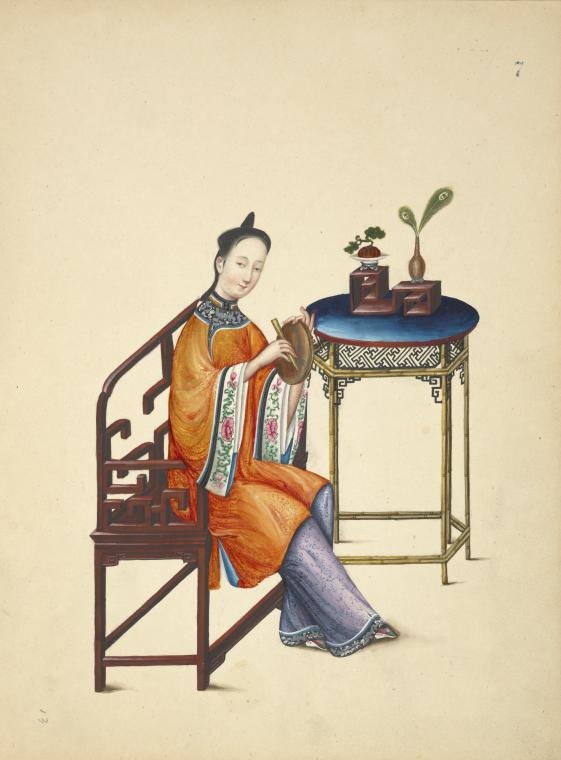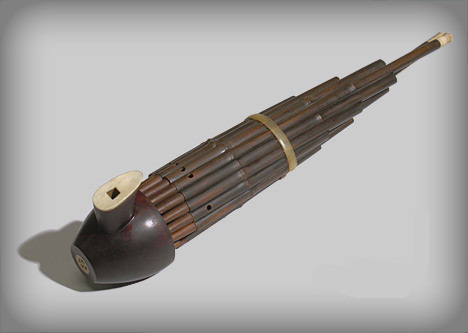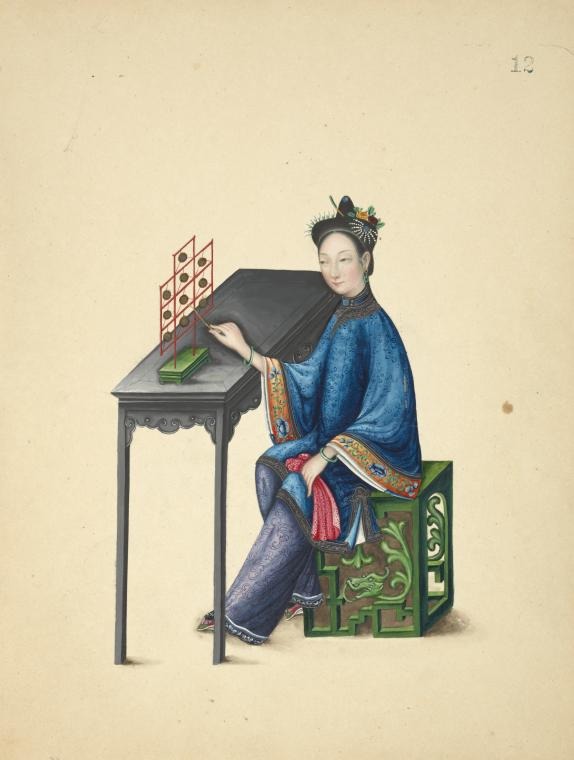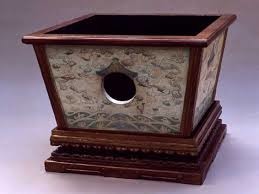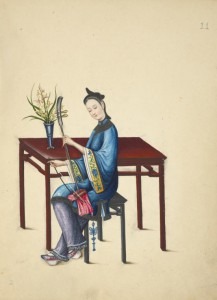
Woman Playing the Erhu or Jinghu
Musical instruments in China were traditionally classified into 8 groups delineated by the material used in the instrument: Silk, Bamboo, Wood, Stone, Metal, Clay, Gourd and Hide. We will look at selected instruments in six of these groups in this series. The watercolor illustrations used in this series were made in the 1800s.
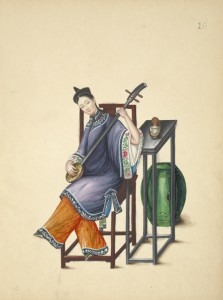
Woman playing a Sanxian
One of the most common instruments is the two-stringed Erhu. In Mandarin, the word ‘er’ means ‘two.’ If you look closely at the picture, you’ll see that the bow hairs are behind the strings. There’s no instrument in the west that is played from the back of the strings in this fashion.
Traditional: The River of Sorrow (Min Hui-Fen – erhu)

The Yangqin
The Sanxian, a three-stringed lute (san = three), has a small body covered with snakeskin. This plucked instrument has a brighter sound than the erhu.
Ning Yong: Camel Bells Of The Silk Road (Zhang Nian-bing, sanxian; Shanghai Conservatory Chinese Orchestra; Xia Fei-yun, Conductor)
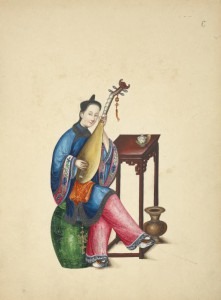
Woman playing a Pipa
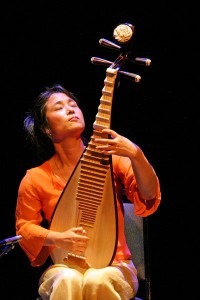
Wu Man playing a Pipa
One of the most famous of the Chinese Silk Instruments, and one of the few that has made an appearance in Western repertoire, is the Pipa. Unlike the Western lute, to which it is most often compared, the fretted pipa is played with the instrument in a vertical position.
Tan Dun: Pipa Concerto: II. Allegro (Wu Man, pipa; Moscow Soloists; Yuri Bashmet, Conductor)
The two syllable that make up the name ‘pipa’ indicate the way it’s played: “pí” is to strike outward with the right hand, and “pá” is to pluck inward towards the palm of the hand, and as you listen to the Pipa Concerto, you will hear both the striking and plucking actions.

Girl playing a Zheng

Kung Fu Hustle Assassin and Zheng
In the 2004 move Kung Fu Hustle, an assassin sits down at a zheng and plays a fierce melody and at the same time uses the strings to fire deadly blades at the heroes – one of the few times when you’ll see musical instruments used as weapons!
These are just a sample of the many kinds of stringed instruments in the silk category – there are many more to be discovered as you venture into the world of Chinese musical instruments. Next time: Bamboo Instruments.

